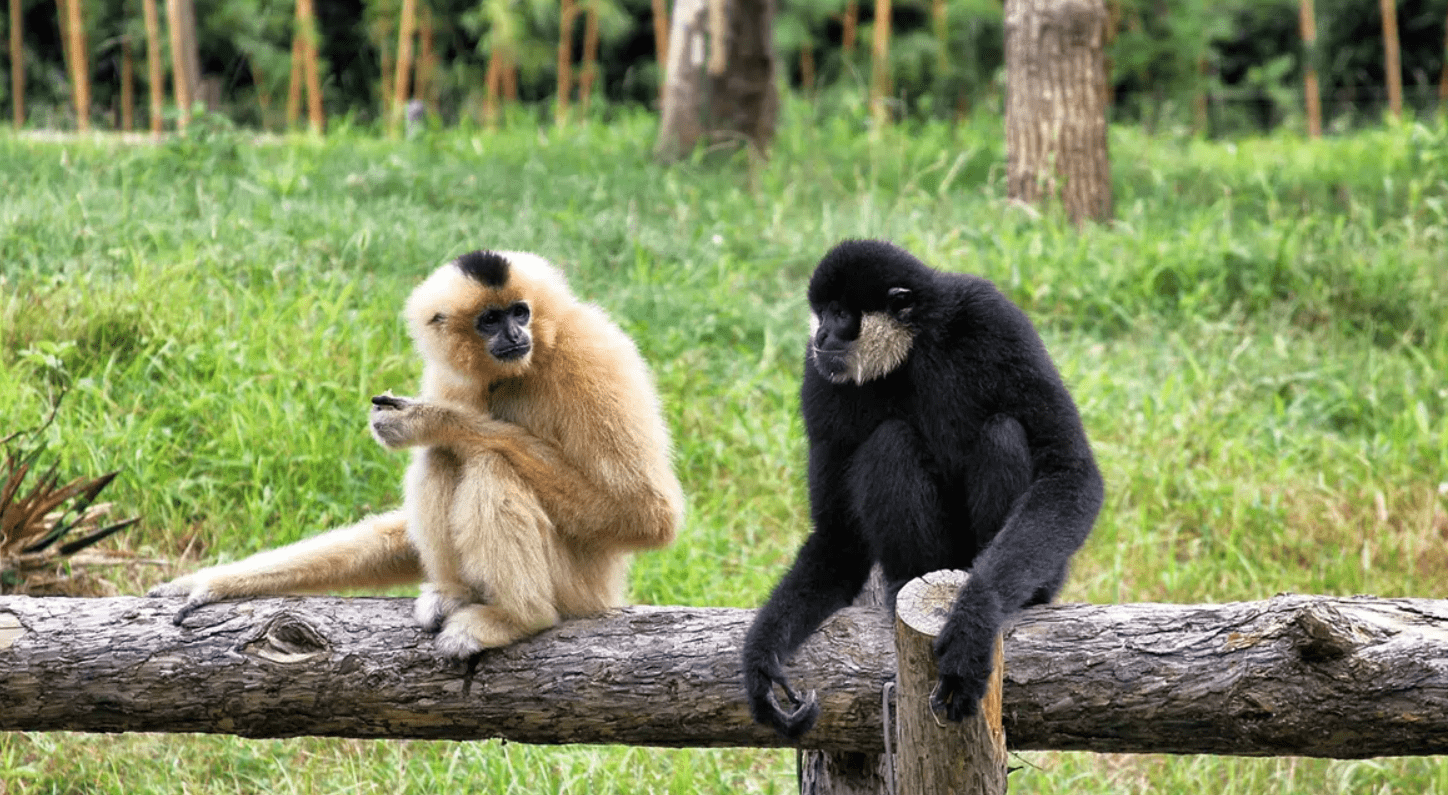Hoollongapar Gibbon Sanctuary: Assam is blessed with an abundance of rich wildlife, though our minds often associate the state with the famous one-horned rhinoceros when discussing its fauna. However, the Hoollongapar Gibbon Sanctuary in Jorhat, Assam, stands out as a unique destination. This sanctuary is home to India’s only ape, the Hoolock Gibbons, and Northeast India’s sole nocturnal primate, the Bengal slow loris. We explored the Hoollongapar Gibbon Sanctuary following an enriching visit to Majuli.
The Hoollongapar Gibbon Sanctuary is a secluded forest area near the Assam-Nagaland border, nestled amidst tea gardens and small villages. Historically, this forest stretched to the foothills of the Patkai range. Even after being declared a wildlife sanctuary in 1997, the forest extended from Assam into Nagaland. However, the expansion of tea plantations and human settlements eventually fragmented the forest, isolating the reserve from the foothills. Additionally, a railway track passing through the sanctuary further divided it. Currently, the sanctuary is divided into five segments.
Wildlife at Hoollongapar Gibbon Sanctuary
Hoollongapar Gibbon Sanctuary is the only sanctuary in India named after gibbons, boasting the highest density of these primates. The sanctuary hosts seven types of apes, including the western hoolock gibbon, Bengal slow loris, stump-tailed macaque, northern pig-tailed macaque, eastern Assamese macaque, rhesus macaque, and capped langur. Besides these primates, the forest is also home to a variety of wildlife, including elephants, tigers, leopards, jungle cats, civets, Himalayan squirrels, wild boars, and other mammals. The sanctuary is also rich in bird species and different types of snakes.
The flora of the sanctuary is equally diverse. The towering hollong trees form the upper canopy, reaching around 90 feet, while the Nahar trees create the middle canopy at about 30 feet, and the shrubs cover the lower canopy. The forest is so dense that the only way to explore it is on foot, despite the presence of wild animals such as leopards, wild elephants, and wild boars. Vehicles are prohibited inside the sanctuary, which is quite rare for national parks and wildlife sanctuaries in India. As a result, every group entering the forest is required to take a guide and an armed guard.
You can spend hours hiking through the forest, searching for wildlife. Even if you don’t encounter any animals, the experience of walking beneath the dense canopy of trees is incredibly rewarding. In some parts of the forest, the foliage is so thick that the sky becomes invisible. As you venture deeper, you’ll be welcomed by the sounds of birds and the calls of various monkey species. During our visit, we were fortunate enough to spot some wildlife.
How to Reach Hoollongapar Gibbon Sanctuary
The nearest airport is in Jorhat, while the closest railway station is Mariani. From Jorhat, you can take a shared taxi or auto to Mariani, and then book an auto to the sanctuary.
Best Time to Visit
The ideal time to visit the sanctuary is from October to March. For the best chance of spotting wildlife, plan your visit early in the morning.
Stay Options
There is a Forest Rest House within the sanctuary. Alternatively, accommodations are available in Jorhat town.
Facts & Trivia
- Vehicles are not allowed inside the sanctuary, so exploring is done entirely on foot.
- It’s mandatory for each group to have a guide and a forest guard.
- The entry fee is INR 250 per person, with an additional charge of INR 500 for a DSLR camera.
- The best time to visit for wildlife sightings is early in the morning.
- If visiting during the monsoon, wear leech socks or carry salt to avoid leech bites. The forest is teeming with leeches during and after the monsoon season.
- The sanctuary is home to seven out of the nine non-human primate species found in India.
- Male gibbons are black, while females are brown.
- Hoolock Gibbons can move at speeds of up to 55 km per hour and cover distances of up to 6 meters in a single swing.


